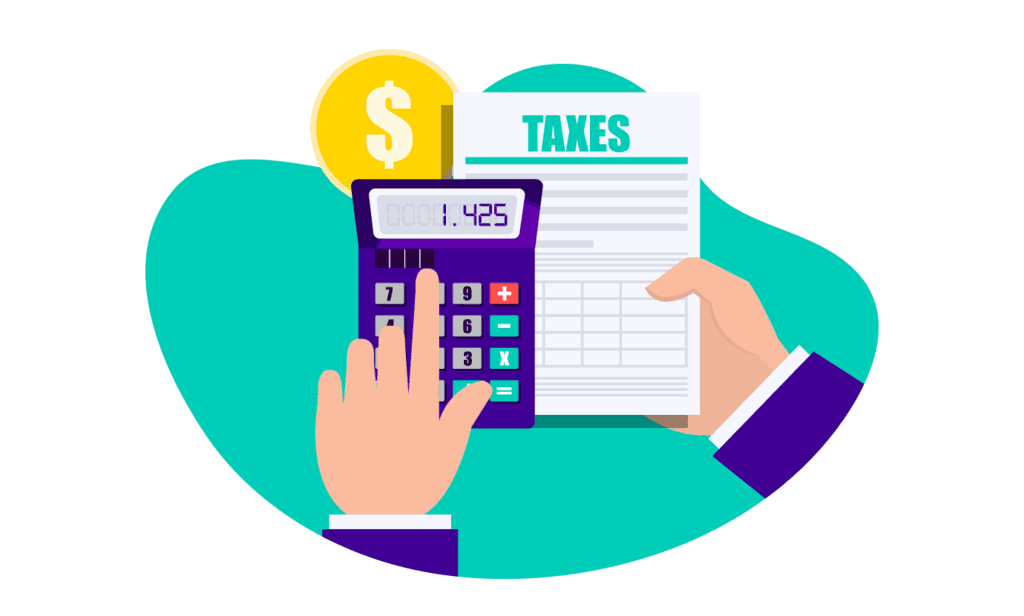Company: Assessment
A) Gross Business Income
Question 1 – What is meant by Gross Business Income?
Answer: Gross business income shall include any sums receivable or deemed to have been received for that basis period in relation to that source by way of sale of trading stock or services. In determining gross business income, Section 12 (should also be read with Section 3), Section 22, Section 24, Section 28 and Section 30 of the Income Tax Act 1967.
Question 2 – Is tax levied on Gross Business Income?
Answer: The income upon which tax is chargeable under this Act is income in respect of gains or profits as prescribed under Paragraph 4(a) ITA 1967 whereby the gains or profits are reflected after the deduction of allowable expenses from the gross business income.
Question 3 – What is the definition of business?
Answer: The interpretation of business under Section 2 of the ITA 1967 includes profession, vocation and trade and every manufacture, adventure or concern in the nature of trade, but excludes employment. Subsection 2 (1) gives a broader meaning of business in whereby focuses on the motives or purposes’ of each transaction made.
B) Pre-Operation Business Expenditure
Question 4 – Are Pre-Operational or Pre-Commencement expenditure incurred by the company, allowed to be deducted from the gross income of the business?
Answer: Generally, expenses incurred by a person prior to the commencement of his operations or business would not be allowable as a deduction against the gross income of his business as they are not wholly and exclusively incurred in the production of the income.
However, Schedule 4B of the ITA 1967 and the Rules issued by the Minister of Finance: PU (A) 61/1992, PU (A) 111/1995, PU (A) 160/1996, PU (A) 475/2003, PU (A) 472/2005, PU (A) 135/2006, PU (A) 65/2007, PU (A) 361/2008, PU (A) 401/2009 and PU (A). 76/2012 allows deductions for certain expenses incurred prior to the commencement of operations or business.
Question 5 – More details on Allowable Pre-Operational & Pre-Commencement Expenses of the business?
Answer: Kindly log on to IRBM Official Portal at www.hasil.gov.my> Internal Links> Public Ruling> No. 11/2013: Pre-Operational Business Expenditure.
- Expenditure allowed in accordance with the general provisions which is in accordance with the provisions of Section 33 of the ITA 1967
- Expenditure allowed in accordance with specific provisions or deductions such as Section 34, Section 34A, Section 34B Section 34C, Section 35 of the ITA 1967; and
- Expenditure allowed under other provisions or approved by the Minister of Finance
Subsection 33 (1) of the ITA 1967, provides for expenditure which is wholly and exclusively incurred in generating gross income from a source may be allowed as a deduction from the gross income of that source. The provisions of Subsection 33 (1) of the ITA 1967 should be read in conjunction with the provisions of Subsection 39 (1) of the ITA 1967 in determining adjusted income.
C) Deductions Not Allowed
Question 7 – What is meant by Section 39 of the ITA 1967
Answer: Section 39 of the ITA 1967 specifically defines no deduction from the gross income from that source for that period shall be allowed.
D) Allowance Claims
i. Capital Allowance;
Question 8 – What is Capital Allowance?
Answer: No deduction is allowed for expenses incurred on assets or assets’ depreciation. In determining the adjusted income of a business, no deduction is allowed for expenses incurred on assets or depreciation of assets.
Tax deduction is given in the form of Capital Allowance in lieu of depreciation expense for the purchase of assets used in the business, in determining the statutory income for a business source. Capital Allowance is only given to a person who incurs Allowable Expenditure on assets used for his business purposes as provided under Schedule 3 of the ITA 1967 and is only given a deduction if claimed.
Capital Allowance is given in the form of Initial Allowance Annual Allowance.
Question 9 – What are the conditions for claiming Initial Allowance and Annual Allowance?
Answer:
- Initial Allowance :
- Operating a business
- Purchase of business assets
- Assets are used for business purposes, and
- At the end of the basis period (or at time / during the disposal of asset) he is the owner of the asset.
- Annual Allowance :
- Operating a business
- Purchase of business assets
- Assets are used for business purposes, and
- At the end of the basis period, he is the owner and the asset is still in use in business
Question 10 – More details on Capital Allowance?
Answer: Kindly log on to IRBM Official Portal: www.hasil.gov.my> Internal Links> Public Ruling :
- No. 5/2014: Ownership and Use Of Asset For The Purpose Of Claiming Capital Allowances
- No. 12/2014: Qualifying Plant and Machinery For Claiming Capital Allowances
- No. 6/2015: Qualifying Expenditure And Computation Of Capital Allowances
ii. Agricultural Allowance;
Question 11 – What is Agricultural Allowance?
Answer: Referring to Paragraph 7, Schedule 3 of the ITA1967, Agriculture Allowance is one of the incentives provided to persons carrying on business activities in the agro-based industry.
Question 12 – Who is Eligible to claim for Agriculture Allowance?
Answer: A person who has incurred qualifying agricultural expenditure in relation to an asset and his business is entitled to claim Agricultural Allowance for the year of assessment if he is the owner of the asset at the end of the basis period and the asset is used in the business.
Question 13 – More details on Agriculture Allowance?
Answer: Kindly log on to IRBM Official Portal: www.hasil.gov.my> Internal Links> Public Ruling > No. 1/2016: Agricultural Allowances.
iii. Forest Allowance
Question 14 – What is Forest Allowance?
Answer: With reference to Paragraph 8, Schedule 3 of the ITA 1967, Forest Allowance is one of the incentives provided to persons carrying on timber extractions.
Question 15 – Who is Eligible to claim for Forest Allowance?
Answer: A person who has been granted a concession or license and carries on a business of timber extraction is entitled to claim forest allowances on expenditure incurred on the construction in the forest of :
- Roads or buildings which are used for the purposes of the business of extracting timber. As a concession, bridges or jetties constructed for such business would also qualify for the allowances specified; or
- Buildings provided for the purposes of welfare or living accommodation of employees engaged in the extraction of timber.
Question 16 – More details on Forest Allowance?
Answer: Kindly log on to IRBM Official Portal: www.hasil.gov.my> Internal Links> Public Ruling > No. 11/2014: Forest Allowances And Expenses Relating to Timber Extraction .
iv. Industrial Building Allowance
Question 17 – What is Industrial Building Allowance?
Answer: Industrial Building Allowance is provided in accordance with Schedule 3 of the ITA 1967 and is given at the expense of a building eligible either to construct or purchase the building.
Question 18 – What types of buildings are qualified as Industrial Buildings?
Answer: A building that qualifies as an industrial building as stated in paragraphs 63 to 66 of Schedule 3 of the ITA empowers the Minister of Finance to prescribe the types of buildings that qualify as industrial buildings and determine the rates through the ITR made under subsection 154(1) of the ITA 1967.
Question 19 – More details on Industrial Building Allowance?
Answer: Kindly log on to IRBM Official Portal: www.hasil.gov.my> Internal Links> Public Ruling >
- No. 8/2016: Industrial Building Part I
- No. 10/2016: Industrial Building Part II
v) Reinvestment Allowance (RA)
Question 20 – What is Reinvestment Allowance?
Answer: The Reinvestment Allowance (Schedule 7A of the ITA 1967) is a special incentive to encourage Malaysian-resident companies to reinvest business profits by incurring eligible expenses in expanding, modernizing or automating its existing business in respect of manufacturing or processing of a product or any related product within the same industry or in diversifying its existing business into any related product within the same industry.
Question 21 – More details on Reinvestment Allowance?
Answer: Kindly log on to IRBM Official Portal: www.hasil.gov.my> Internal Links> Public Ruling :
- No. 6/2012: Reinvestment Allowance
- No. 9/2017: Reinvestment Allowance Part I – Manufacturing Activity
- No. 10/2017: Reinvestment Allowance Part II – Agricultural And Integrated Activities
vi) Investment Tax Allowance (ITA)
Question 22 – What is Investment Tax Allowance?
Answer: ITA is an incentive given on capital expenditure incurred in a basis period by any company participating or intending to participate in a promoted activity or producing a promoted product. ITA and pioneer status are mutually exclusive in respect of the same promoted activity or product, whereby a company cannot enjoy both of these incentives at the same time and for the same activity.
Question 23 – Where can the ITA Application be submitted?
Answer: Application and the grant of ITA is within the jurisdiction of the Ministry of International Trade and Industry (MITI).
F) Pioneer Status?
Question 25 – What is Pioneer Status?
Answer: Pioneer Status is one of the incentives in the provisions of the Promotion of Investments Act 1986 which provides tax exemption (partly or all) on relevant business statutory income given to companies that participate in a promoted activity or of producing a promoted product in Malaysia. The Pioneer Status Incentive and Investment Tax Allowance are “mutually exclusive” whereby a company cannot enjoy both of these incentives at the same time and for the same activity.
Question 26 – Where can the submission of Pioneer Status be made ?
Answer: Application and the grant of Pioneer Status is within the jurisdiction of the Ministry of International Trade and Industry (MITI).
G) Transfer Pricing (TP)
Question 28 – What is Price Transfer?
Answer: TP generally refers to intercompany pricing arrangements for the transfer of goods, services and intangibles between a multinational company and a subsidiary company within the country itself (local transfer pricing) or across the border abroad (cross border). These transactions are called controlled transactions or related party transactions.
The selling price of a product charged by the parent company to the subsidiary company may differ from the selling price with an independent third party. This determination of the sale price may be referred to as the transfer price.
Article 9, OECD Model Tax Convention On Income and On Capital – OECD defines related companies as:
- One of the companies participates directly or indirectly in the management, control or capital of the other company; or
- Same persons participate directly or indirectly in the management, control or capital of both companies
Section 139 of the ITA 1967 has provided a person shall be taken to have control of a company if he exercises or is able to exercise or is entitled to acquire control (whether direct or indirect) over the company’s affairs and in particular, without prejudice to the generality of the preceding words, if he possesses or is entitled to acquire the greater part of the share capital or voting power in the company.
Question 29 – When can the TP Guidelines be applied?
Answer: The IRBM Transfer Price Guidelines are applicable when there is a transaction between the relevant multinational companies, i.e. one business is subject to Malaysian tax and the other is subject to foreign tax. The guidelines issued are based on the Arm’s Length Principle as set out in the Transfer Pricing Guidelines for Multinational Enterprises and Tax Administrations – OECD.
Question 30 – What is the Arm’s Length Principle?
Answer: The Arm’s Length Principle as stated in paragraph 1 of Article 9 of the OECD Model Tax Convention explains as the preferred basis (internationally accepted) for determining the transfer price of a transaction between associated persons, which were made between independent entities under the same or similar circumstances.
Question 31 – More details on TP Guidelines and Income Tax (Transfer Pricing) Rules 2012?
Answer: Kindly log on to IRBM Official Portal at www.hasil.gov.my> Internal Links> Technical Guidelines> Transfer Price Guidelines and Income Tax (Transfer Pricing) Rules 2012.
H) Investment Holding Company (IHC)
Question 32 – What is an Investment Holding Company?
Answer: IHC means a company whose activities consist mainly in the holding of investments and not less than 80% of its gross income other than gross income from a source consisting of a business of holding of an investment (whether exempt or not) is derived from the holding of those investments.
Question 33 – What is Business of Holdings of an Investment?
Answer: Investment Holding Business means a business of letting of real property where a company in any year of assessment provides maintenance services or support services in respect of the real property.
Question 34 – How is the Tax Treatment of IHC?
Answer: The tax treatment for an IHC depends on whether the IHC is or is not listed on the Bursa Malaysia. The special tax treatment for an IHC is provided under :
- Section 60F of the ITA for an IHC not listed on the Bursa Malaysia; and/li>
- Section 60FA of the ITA for an IHC listed on the Bursa Malaysia.
Question 35 – More Details on IHC?
Answer: Kindly log on to IRBM Official Portal: www.hasil.gov.my> Internal Links> Public Ruling> No. 10/2015: Investment Holding Company.
Want to know more about starting a Sdn Bhd? What’s the best way to start one, and what should you be mindful of? Register and find out in our upcoming webinar!


Are you ready to form your Sdn Bhd with Malaysia’s #1 award-winning Online Company Secretary? Contact us now via WhatsApp @018-767 8055
